Top 10: Collaborative design software
Updated: August 01, 2023
Collaborative design software is a specialized digital tool that empowers designers and teams to work together on creative projects in a unified and interactive environment. This software enables real-time collaboration, allowing multiple users to simultaneously edit, comment, and provide feedback on designs, regardless of their physical locations. Collaborative design software often includes features like version control, design asset management, and live chat, fostering seamless communication and efficient design iteration. With cloud-based accessibility, team members can access and contribute to design projects from any device with an internet connection, promoting flexibility and productivity. Collaborative design software is particularly valuable for remote teams and businesses with geographically dispersed designers, as it streamlines the design process, enhances teamwork, and ultimately results in faster project completion and high-quality design outcomes.
Some of the most popular collaborative design software options are listed below.
See also: Top 10 Online Design software
See also: Top 10 Online Design software
2022. Penpot inks $8M for its open source Figma alternative
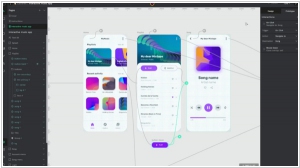
Spanish startup Penpot has secured $8 million in funding. Penpot offers a novel approach to design collaboration, utilizing an open-source platform that enables simultaneous involvement of designers and developers. The platform operates independently of specific operating systems and is web-based, utilizing open web standards like SVG. Penpot has experienced significant growth, particularly following the Adobe-Figma acquisition news. Even prior to this development, Penpot had already gained recognition in the industry. Within a year of its launch, the startup garnered tens of thousands of downloads and received 15,000 stars on GitHub. Among its active users, Penpot boasts an impressive roster of 10,000 companies, including Google, Microsoft, Red Hat, Tencent, ByteDance, and Mozilla.
2022. Canva announces Docs - word processing tool
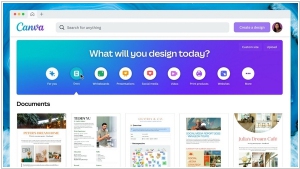
Graphic design platform Canva has introduced its latest collaborative word processing tool, Canva Docs. With the goal of rivaling established platforms like Google Docs, Canva Docs offers a stylish and visually appealing approach. Similar to its competitors, Canva Docs enables multiple users to collaborate simultaneously on a document, allowing you to observe real-time edits from your editor. In addition to standard features like spell check and support for non-English languages, including those with non-Latin characters, Canva Docs stands out with its emphasis on visual design. The word processor provides a range of format templates for users to select from, and its unique "Docs to Decks" feature automatically transforms a document into a presentation format, saving you significant time and effort. Furthermore, Canva Docs allows users to embed other Canva projects within their documents, such as presentations, videos, and digital whiteboards, enhancing the overall visual experience and flexibility of content creation.
2022. 3D content collaboration startup Taichi Graphics closes $50M

Taichi Graphics, a startup renowned for its Taitopia cloud-based platform, which enables the creation, sharing, and remote collaboration of 3D graphics, has successfully concluded a Series A funding round, amassing $50 million in investments. The platform's foundation lies in its open-source programming language called Taichi, which empowers high-performance computations on sparsely structured spatial data, particularly prevalent in the realm of 3D visual graphics. Taichi Graphics' suite of tools has found wide-ranging applications in various fields such as physical simulation, augmented reality, artificial intelligence, robotics, and special visual effects in the domains of films and games. In essence, it functions as a "Figma for 3D content," providing users with an intuitive and versatile environment for their creative pursuits.
2021. Ditto raises $1.5M to help teams collaborate on copy
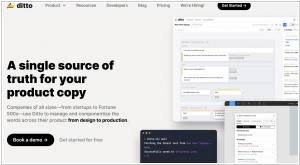
Ditto, a startup that specializes in developing software aimed at discovering a "single source of truth" for copy, has secured $1.5 million in seed funding. Despite the typically chaotic nature of copy workflows during design and implementation, even the most well-organized teams often find themselves sifting through convoluted email threads, collections of screenshots, and Slack direct messages exchanged among various teams. The creators of Ditto aspire to provide copy teams with a dedicated platform that maintains organization and synchronization across projects and applications. This ensures that the language used is ultimately finalized and prepared for deployment when the moment arrives.
2020. Design platform Figma raises $50 million
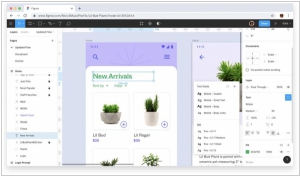
Figma, the design platform renowned for its collaborative and cloud-based approach, has recently concluded a successful Series D financing round, raising $50 million. After nearly six years of development in stealth mode, Figma was launched in 2015 with the vision of creating a collaborative design tool that functions similarly to Google Docs. Since its inception, Figma has continued to enhance its platform, focusing on expanding accessibility and usability for individual designers, small firms, and large enterprise companies. Additionally, the company introduced an educational platform called Community, empowering designers to share their work and enabling users to "remix" designs or explore them layer by layer.
2020. Ceros launches MarkUp, a design collaboration tool for live websites
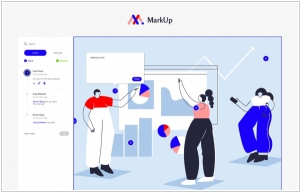
When designers need to collaborate with other teams, they often rely on tools like InVision and Zeplin. However, Ceros has identified an interesting gap in the market beyond the prototyping stage. As designers work with live or staging websites, the collaboration process becomes fragmented, involving screenshots, emails, phone calls, and Google Docs. To address this issue, Ceros is introducing a new product called MarkUp. MarkUp allows users to highlight specific areas of interest on a website, leave comments and tasks, and track revisions as they are completed. This valuable tool will operate independently from the core Ceros Studio platform and is available for free to all users.
2019. Online design tool Figma gets new enterprise collaboration features
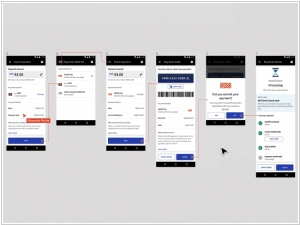
Figma, the web-based design and prototyping tool aiming to provide an alternative to similar tools like Adobe, is introducing a range of new features today to enhance collaboration across teams within large organizations. Known as Figma Organization, this feature set represents the company's first enterprise-grade service, incorporating controls and security tools that are essential for large companies. One notable addition for designers is the introduction of organization-wide design systems. While Figma already offered tools for creating design systems, this enterprise version simplifies the process of sharing libraries and fonts among teams. This ensures consistent application of styles across a company's products and services.
2019. Smartsheet acquires Slope to help creatives collaborate

Smartsheet, the renowned project management and collaboration tool, has recently completed the acquisition of Slope, a collaboration tool specifically designed for sharing creative assets. This integration of Slope into the Smartsheet platform empowers users to seamlessly share assets such as videos and photos directly within the application. Moreover, it introduces the functionality to annotate, comment on, or approve these assets. Smartsheet envisions this native integration from a broad enterprise perspective. It facilitates various scenarios, including HR teams sharing training videos, marketing departments exchanging product photos, or construction company employees inspecting a site and collaboratively addressing code violations by sharing annotated photos to highlight the issues at hand.
2018. Prototyping tool InVision is valued at $1.9 billion
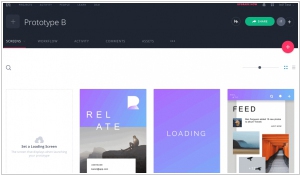
InVision, the design startup aspiring to become the Salesforce of the design industry, has officially reached unicorn status by successfully closing a $115 million Series F funding round. This latest investment brings the company's total funding to $350 million and values InVision at $1.9 billion. InVision initially emerged in 2011 as a straightforward prototyping tool, allowing designers to create interactive experiences without requiring direct involvement from the engineering team. These prototypes could then be shared with various teams, including engineering, product, marketing, and executives, for collaboration and approval. Over the years, InVision has expanded its scope to cover the entire design process, offering a comprehensive collaboration suite called InVision Cloud, enabling the involvement of every team member in the design process. Additionally, they introduced Studio, a design platform aimed at competing with industry giants like Adobe and Sketch. InVision also developed the InVision Design System Manager, a centralized solution for design teams to manage their assets and implement best practices effectively from a single location.
2018. InVision acquired design visibility tool Wake

Online design platform InVision has recently acquired Wake, a design tool specifically focused on enhancing design visibility within organizations. Wake enables companies to share design assets and monitor the progress of ongoing design projects, such as screen development, logo creation, and other design elements. Notably, design team leaders and company executives can provide feedback and prioritize specific design initiatives through upvoting. Wake's seamless sharing capability sets it apart from InVision, where designers need to take additional steps to upload their prototypes. While Wake will maintain its independent operations under the InVision umbrella, certain tools will be integrated into the core InVision product. Additionally, as part of the acquisition, Wake will introduce a free tier for its services.
2015. Video collaboration startup Frame.io raised $2.2M
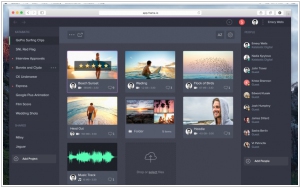
Frame.io, the platform that revolutionizes the collaboration process in video production, has secured a funding of $2.2 million. Emery Wells, the co-founder and CEO, shared that Frame.io was born out of his personal frustrations with the existing tools available for working with clients, team members, and other collaborators. While services like Dropbox, Box, or Hightail enable file sharing on typical projects, they often lack a satisfactory video-viewing experience. This often leads to the practice of privately posting videos on platforms like YouTube or Vimeo. However, as Wells pointed out, "Communicating through static emails is cumbersome and results in a jumble of links." Frame.io, on the other hand, allows users to effortlessly upload video, photo, and audio files, view them directly in the browser, compare different versions, make time-stamped annotations and comments, and even draw directly on the video or image.
2013. Adobe goes all SaaS
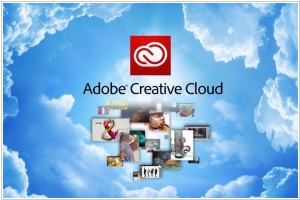
Not long ago we reported that Adobe made the subscription to their creative applications more attractive than purchasing them. Today they have gone further and declared that the subscription will remain the only option. There will be no new version for the Creative Suite (CS). Instead, there will be only Adobe Creative Cloud (CC). Why are they doing it? The first reason - to fight piracy. The second reason - Adobe's creative programs have become cloud services. No, they are not running in browser. But today they not just allow to draw something but also to organize collaboration on a project via multiple computers and with multiple collaborators (on the first place, to organize the interaction between designer and customer). ***

